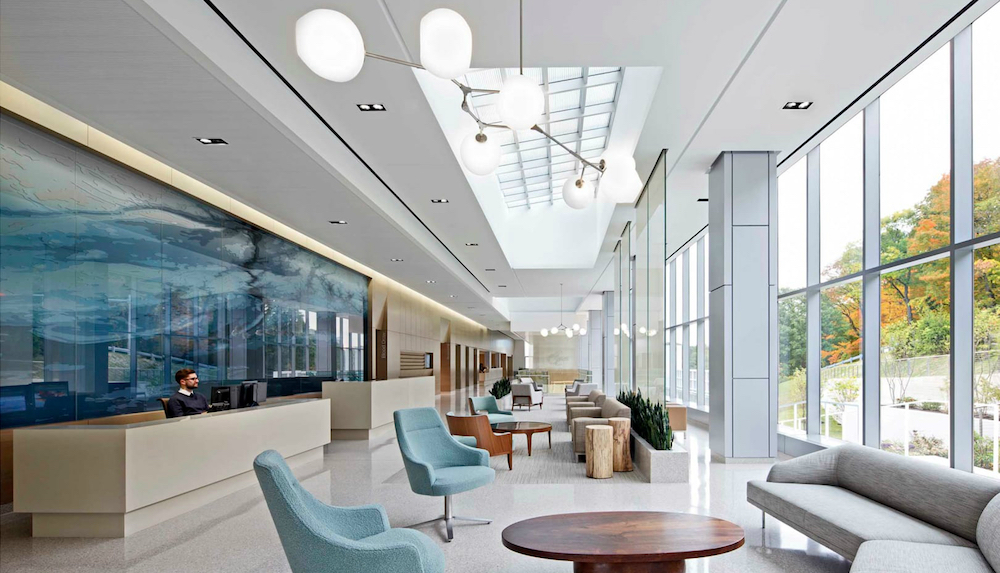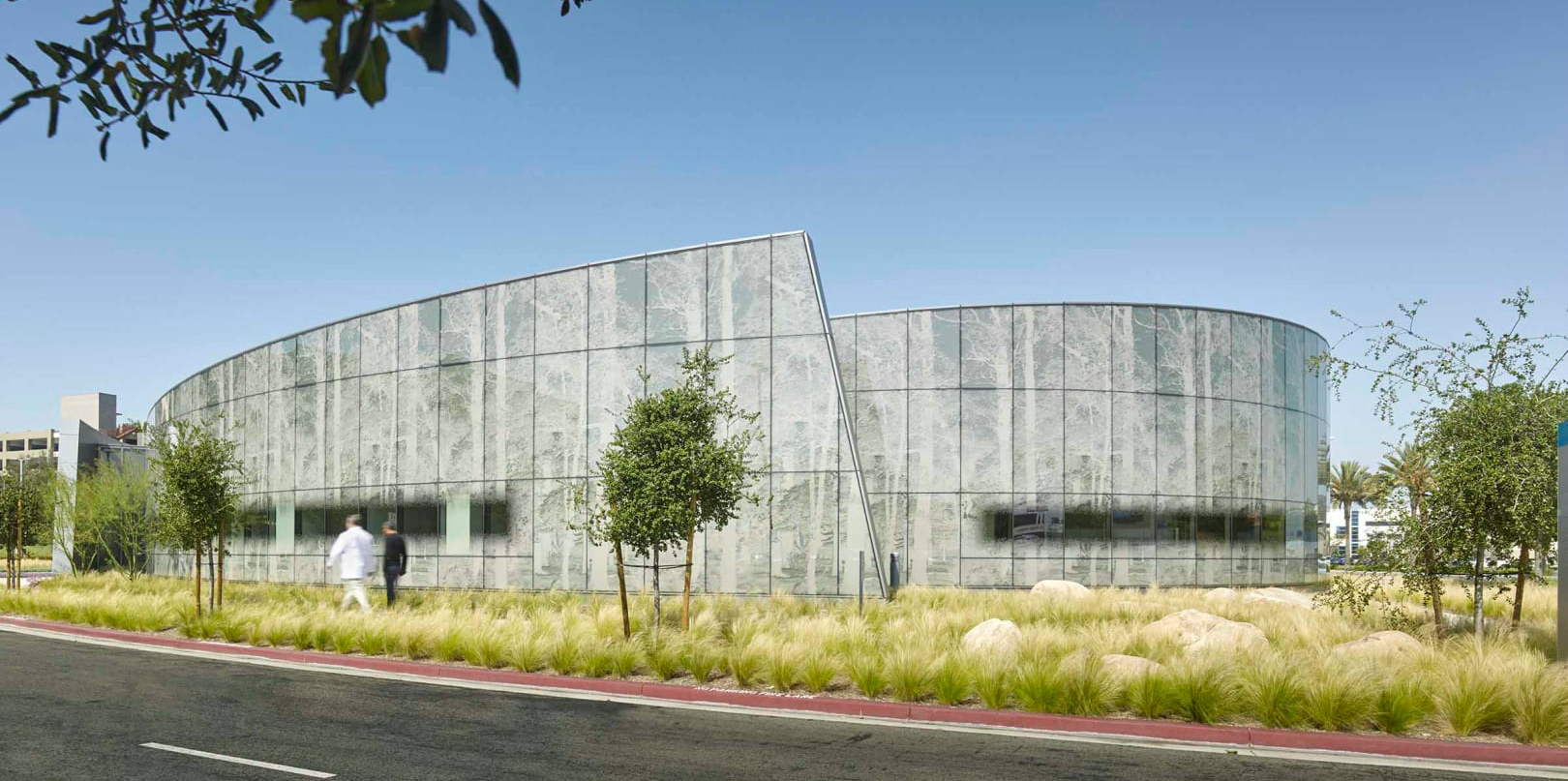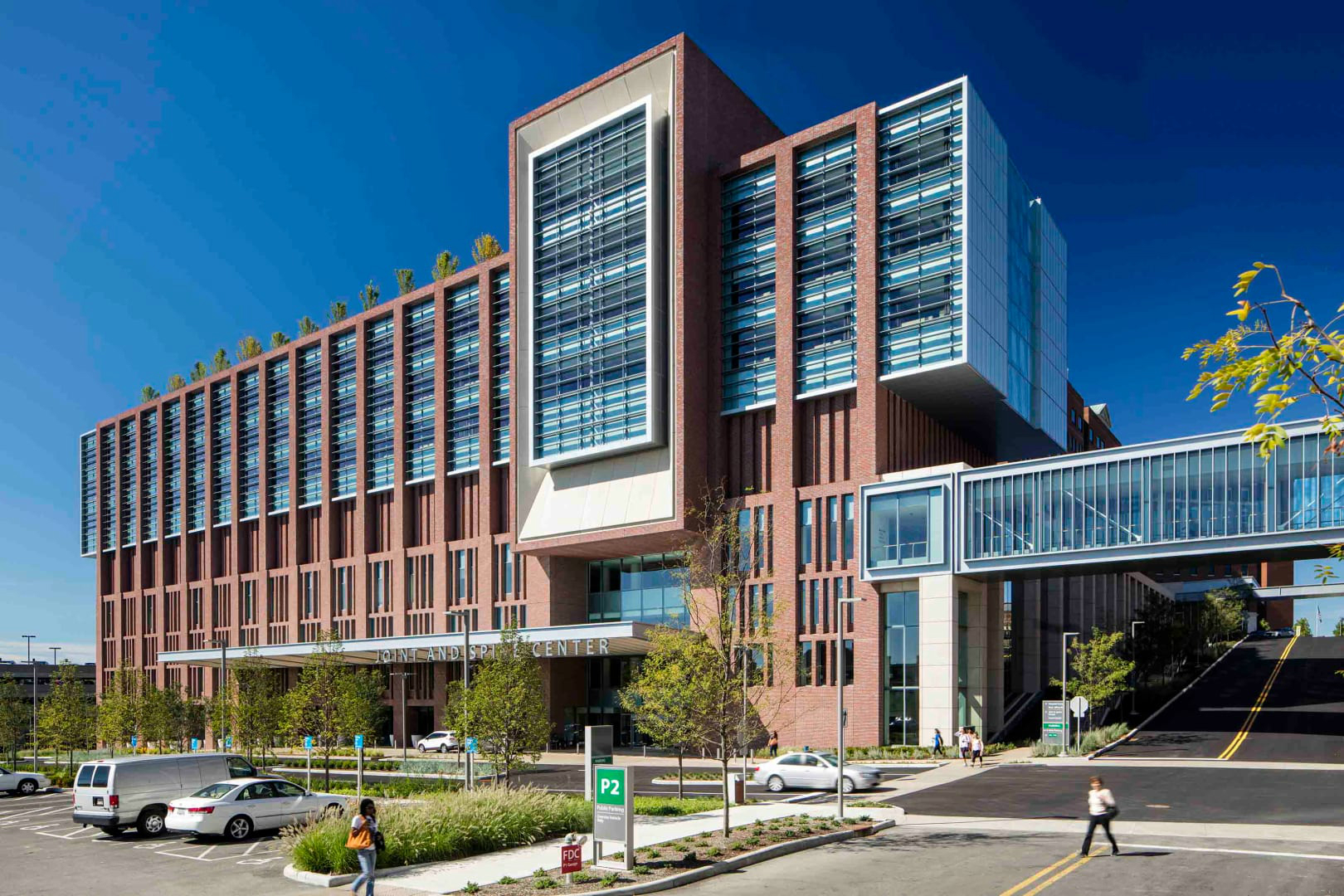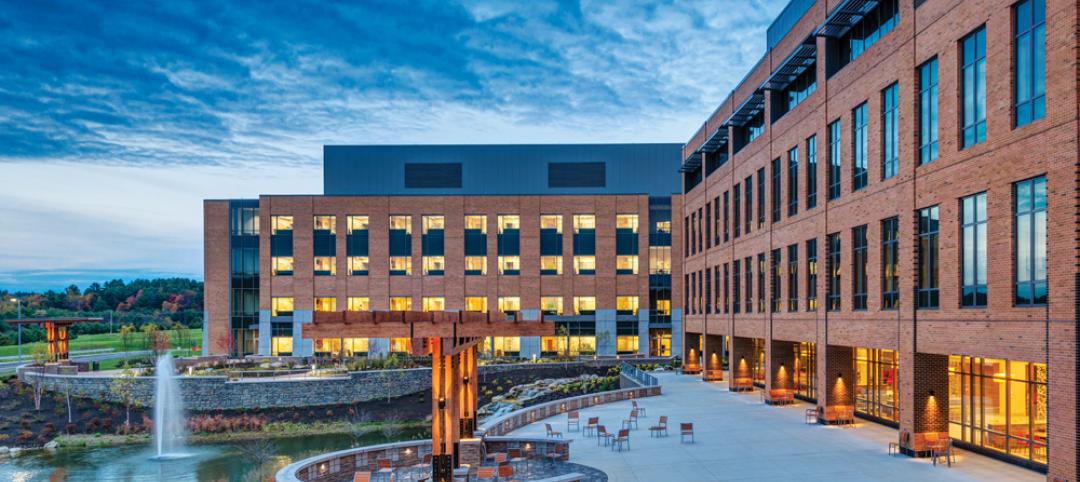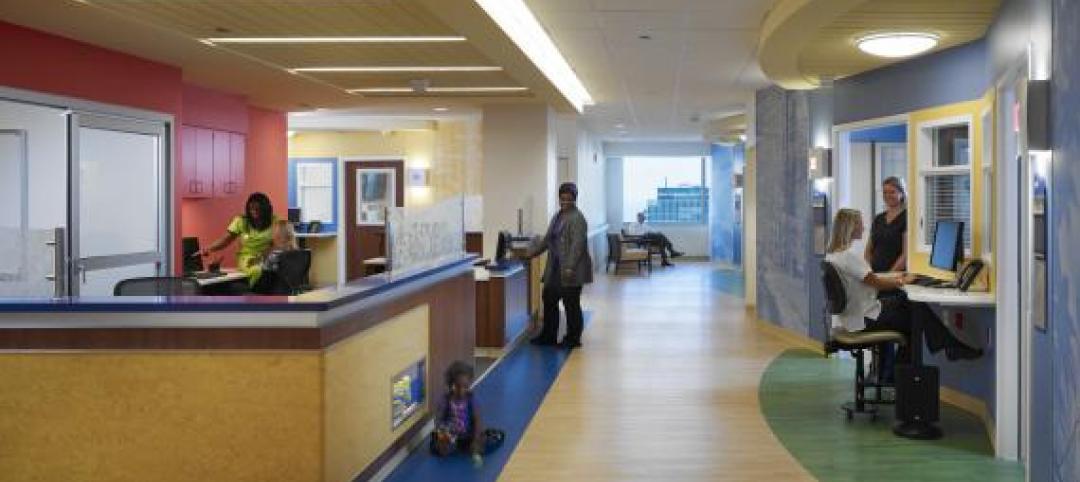The American Institute of Architects (AIA) Academy of Architecture for Health (AAH) has selected the recipients of the AIA National Healthcare Design Awards program. The program showcases the best healthcare building design and healthcare design-oriented research. Projects exhibit conceptual strengths that solve aesthetic, civic, urban, and social concerns as well as the requisite functional and sustainability concerns of a hospital.
Recipients were selected in four categories:
Category A: Built, Less than $25 million in construction cost
Category B: Built, More than $25 million in construction cost
Category C: Unbuilt, Must be commissioned for compensation by a client with the authority and intention to build (No projects were selected in this category this year)
Category D: Innovations in Planning and Design Research, Built and Unbuilt
(All images courtesy AIA. Click photos to enlarge. Click project names for more information and images.)
Category A
Kaiser Permanente, Kraemer Radiation Oncology Center | Anaheim, CA | Yazdani Studio of Cannon Design
The design for this LEED Gold radiation therapy building provides a highly supportive environment for the treatment and care of cancer patients. The challenge was to create an environment that reduces stress for patients and families and provides the best current technological infrastructure. The approach focused on the needs of cancer patients and their treatment schedules, which typically occur five days a week for five to eight consecutive weeks. The design provides a calming experience through the use of natural light, organic forms, outdoor views to nature, soothing interior colors, and an internal “Zen Garden” with a vibrant living wall garden.
Planned Parenthood Queens: Diane L. Max Health Center | Queens, New York | Stephen Yablon Architecture
For its first center in Queens, Planned Parenthood sought a facility that provided state-of-the-art care for one of the most diverse communities in the world. Since opening, the facility has ranked in the 99th percentile for patient satisfaction when compared to similar hospitals. The building’s contemporary design contrasts with its brownstone neighbors, establishing itself as a welcoming community institution. The sleek and light-filled interiors are uplifting and easy to navigate, reducing patient stress. A bold color system aids in orientation and livens up the center.
Category B
Memorial Sloan Kettering (MSK) Regional Ambulatory Cancer Center | West Harrison, New York | EwingCole
The efficient layout reduces the cost of healthcare delivery and supports both short- and long-term expansion possibilities at the West Harrison site for Memorial Sloan Kettering’s Regional Cancer Center. The challenge for the design team was converting what was a 1950s office building, with dated brick and metal panels and large floor plates, into a modern cancer center. The building not only accomplished LEED Gold status but also implemented healthy-building initiatives, such as specifying PVC-free products for both construction and design.
The Christ Hospital Joint and Spine Center | Cincinnati | Skidmore, Owings & Merrill LLP
The Christ Hospital sought to unify its main campus through a model for integrated, patient-centered joint and spine care. Skidmore, Owings & Merrill worked with patients, medical professionals, and hospital staff to design the new Joint and Spine Center. Inside the hospital, spaces for patients are filled with daylight, outside views are maximized to support well-being, and quiet spaces for family and staff are programmed with comfortable furnishings for conversation and rest. The building is LEED certified. Since opening, the facility has ranked in the 99th percentile for patient satisfaction when compared to similar hospitals.
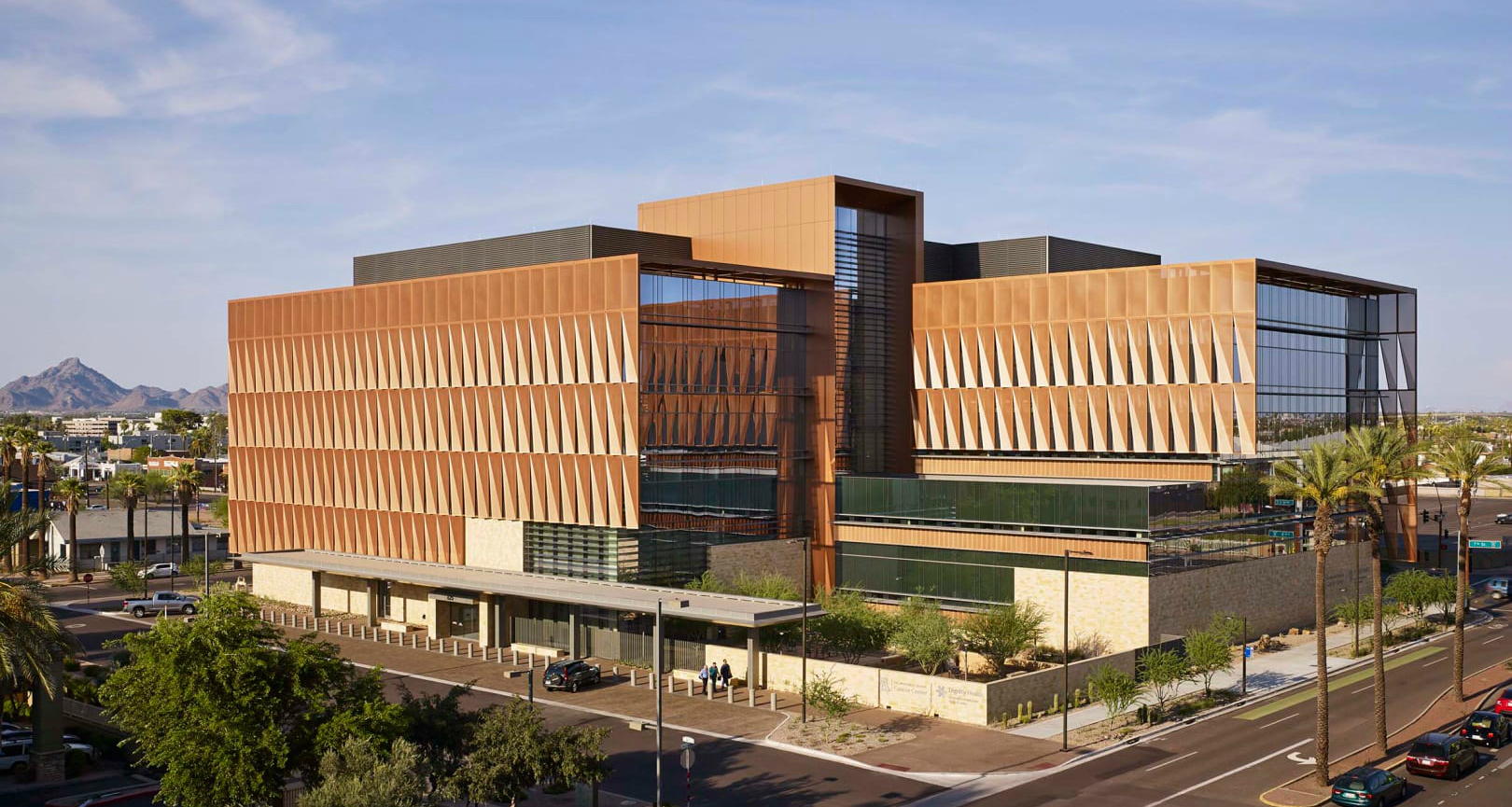 Photo: Nick Merrick / Hedrich Blessing Photographers
Photo: Nick Merrick / Hedrich Blessing Photographers
The University of Arizona Cancer Center (UACC) at Dignity Health St. Joseph’s Hospital and Medical Center | Phoenix | ZGF Architects LLP
The 220,000-sf UACC is intended to deliver care within an evidence-based, multidisciplinary model, using the most modern technologies. The building program includes spaces for radiation oncology, diagnostic imaging, endoscopy and interventional radiology, and exam and procedure rooms, along with a support and wellness center, a clinical pharmacy, and a healing garden. The building was designed to integrate the natural beauty of the landscape and address the needs of the UACC staff and patients for years to come. An exterior shade system and chilled beams greatly contributed to the sustainability of the facility.
University Medical Center New Orleans | New Orleans | NBBJ
University Medical Center provides New Orleans with critical safety-net care in a 1.5 million-sf facility built to withstand natural disasters. Features include inpatient services, cancer care, behavioral health and a Level 1 trauma center. The design promotes holistic healing, from landscaped courtyards to all-private inpatient rooms with natural light and in-suite bathrooms. Wide double-bays and sliding breakout doors enable swift action in treatment zones. Floor-to-ceiling windows in public spaces create transparency and uplifting views, while custom artwork and graphics throughout the hospital to honor New Orleans’ rich heritage. The project is Louisiana’s largest teaching hospital and training facility for physicians, nurses and allied health professionals.
Category D
Seattle Children's Hospital, South Clinic | Seattle | ZGF Architects LLP
Seattle Children's South Clinic advances the hub-and-spoke model of healthcare that brings outpatient services closer to patients in their communities. It offers more responsive care while reducing demand for acute care services. The clinic was designed with a focus on patient flow so providers can serve patients efficiently.
Located in the Seattle suburb of Federal Way and within a shopping center, the design adapts a former Circuit City store into a 37,000-sf outpatient clinic that houses urgent care, and occupational and physical therapy.
Related Stories
| Mar 19, 2014
How to develop a healthcare capital project using a 'true north charter'
Because healthcare projects take years to implement, developing a true north charter is essential for keeping the entire team on track and moving in the right direction.
| Mar 18, 2014
6 keys to better healthcare design
Healthcare facility planning and design experts cite six factors that Building Teams need to keep in mind on their next healthcare project.
| Mar 18, 2014
How your AEC firm can win more healthcare projects
Cutthroat competition and the vagaries of the Affordable Healthcare Act are making capital planning a more daunting task than ever. Our experts provide inside advice on how AEC firms can secure more work from hospital systems.
| Mar 13, 2014
Do you really 'always turn right'?
The first visitor center we designed was the Ernest F. Coe Visitor Center for the Everglades National Park in 1993. I remember it well for a variety of reasons, not the least of which was the ongoing dialogue we had with our retail consultant. He insisted that the gift shop be located on the right as one exited the visitor center because people “always turn right.”
| Mar 12, 2014
14 new ideas for doors and door hardware
From a high-tech classroom lockdown system to an impact-resistant wide-stile door line, BD+C editors present a collection of door and door hardware innovations.
| Feb 21, 2014
Naturally ventilated hospital planned in Singapore
The Ng Teng Fong General Hospital will take advantage of the region's prevailing breezes to cool the spaces.
| Feb 18, 2014
Study: 90% of healthcare providers say Affordable Care Act is 'step forward,' but major revisions needed
Providers are excited about opportunities to address long-term health issues in the U.S., but worries about the transition persist, according to a new study by Mortenson Construction.
| Feb 17, 2014
Lawmakers may take away control of Florida hospital project from the VA
The project is $100 million over budget and has missed its scheduled completion date.
| Feb 14, 2014
Crowdsourced Placemaking: How people will help shape architecture
The rise of mobile devices and social media, coupled with the use of advanced survey tools and interactive mapping apps, has created a powerful conduit through which Building Teams can capture real-time data on the public. For the first time, the masses can have a real say in how the built environment around them is formed—that is, if Building Teams are willing to listen.
| Feb 13, 2014
3 keys to designing freestanding emergency departments
Having physically disassociated from a central hospital, FEDs must overcome the particular challenges associated with a satellite location, namely a lack of awareness, appeal, and credibility. Gresham, Smith & Partners' Kristin Herman-Druc offers three keys to success.


